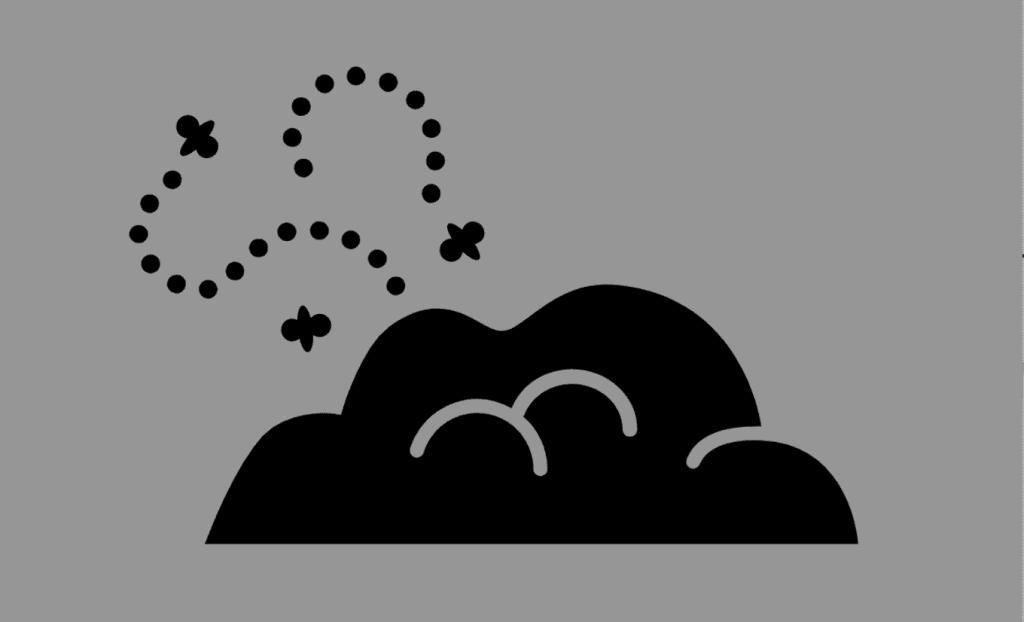
Let’s talk poop: Horse poop to be exact! If you are providing care to horse residents, then you know there’s a lot of it! Much of your time is likely spent mucking it out of equine living spaces (or avoiding stepping in it!). But there’s more to poop than you might think. A lot of time, energy, and close observation goes into providing quality care for horse residents. Putting some of that energy into learning about what is normal versus abnormal horse poop can help you provide better care for your residents, even saving lives in some instances!
To start, “normal” stools should generally be moist brownish-yellowish-greenish fecal balls that are easily broken apart but otherwise tend to hold their shape. This is what you’re likely to see in healthy individuals. Easy to muck without the yuck! However, you are also likely to come across fecal matter that doesn’t look like this. Maybe the color is different, or the amount, maybe it’s even….slimy. Yup, there is a world of knowledge to be learned about horse poop, and this resource is here to introduce you to it!
What Is Normal?
You should always keep in mind that what is considered “normal” for one horse may not be normal for another. While this resource provides a general overview of general signs of health or common poop among horses, every horse is an individual, and you will need to get to know what is normal to the individual in order to provide the best care.
Differences In Foals
This resource focuses on adult horses. Foals often have very different parameters of “normal” from their adult counterparts. This resource is not meant to provide information on normal stools for foals. Talk with your veterinarian about what is normal for foals and younger horses.
Amount
The amount and frequency a horse poops will vary and depend on diet, age, sex, and health. A 1,000 pound horse can produce between 35-50 pounds of poop a day! Mares and geldings (neutered males) usually average 6 to 8 bowel movements a day, while foals may average significantly more. Additionally, if you care temporarily for a stallion (unneutered male), he may also have significantly more bowel movements. However, some of this increase has social meaning and may not be seen if they are housed alone (which is preferable in order to prevent breeding until they have been gelded (neutered). It shouldn’t take a horse long to defecate.
Consistency And Texture
Keeping in mind that “normal” varies between individuals, the consistency of healthy stool should present as moist, soft, multiple individual balls of fecal matter. They should fall to the ground and mostly keep their shape, but be easily broken up. Stools consisting of loose piles, dry and hard fecal matter, or watery stools (particularly watery diarrhea) should be noted and action taken where appropriate. Dry, hard stools that may or may not be coated in mucous can be indicative of digestive issues and impaction, which can lead to or be a sign of colic. Watery or projectile diarrhea is also cause for serious concern. Both compacted dry, hard stools that are few in number and diarrhea should be taken seriously and your veterinarian should be contacted. Some causes for such consistency (or lack thereof) are more serious than others, though it’s important to act quickly and take these signs seriously as it might be life-threatening. In addition to the above, be sure to check your horse resident’s stools for the presence of parasites, which may be visible in their fecal matter.
Possible Causes Of Constipation
- Improper/unbalanced diet
- Rapid diet change
- Ingesting sand
- Damage of the digestive system from heavy parasite loads
- Dehydration (A lack of water intake)
- Certain medications
- Dental issues
- Foreign body ingestion/enteroliths
Possible Causes Of Diarrhea
- Antibiotics
- Overeating grain
- Rapid changes to diet
- Access to lush, green pastures
- Ingestion of sand
- Bacterial infections
- Viral infections
- Bowel diseases
- Ingestion of toxic plants
- Parasites
- Changes to dewormingThe act of medicating an animal to reduce or eliminate internal parasites, either prophylactically or in response to illness. schedules
- Stress
Textures To Look For
- Oily: This could indicate an overabundance of vegetable oil in their diet.
- Gritty: This points to the ingestion of sand.
- Dry: Could indicate constipation from not enough water consumption or impaction.
- Fibrous: Lots of large bits of forage could indicate possible issues and should be discussed with your veterinarian.
Keep An Eye Out For Parasites
It is important to keep an eye out for the presence of parasites in your horse resident’s stools. Some parasites may be too small to see in their stool, and age can also play a factor in being able to see certain parasites in a horse’s stool. It is normal to see parasites in stool following a de-worming. Remember, just because you don’t see parasites in a horse’s stool doesn’t mean they don’t have them!
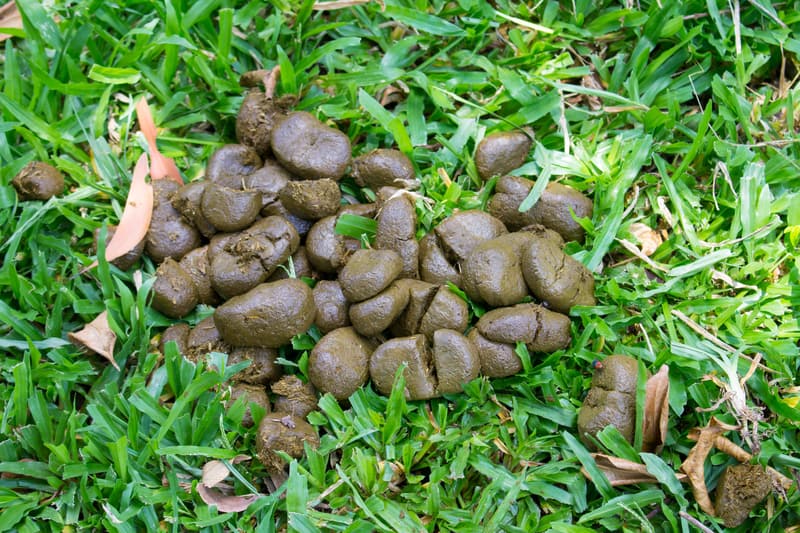

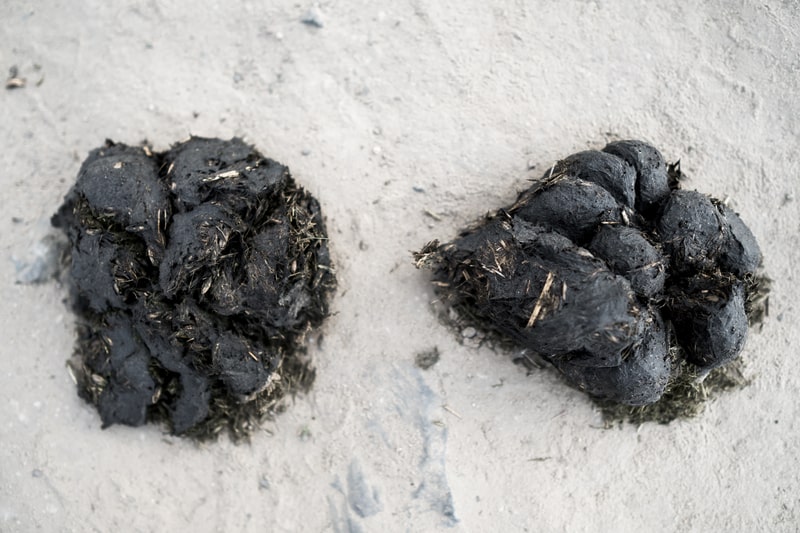
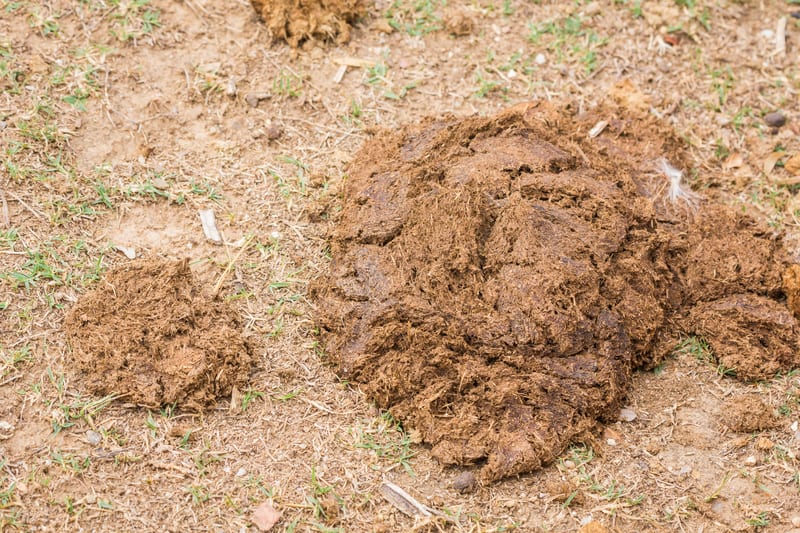
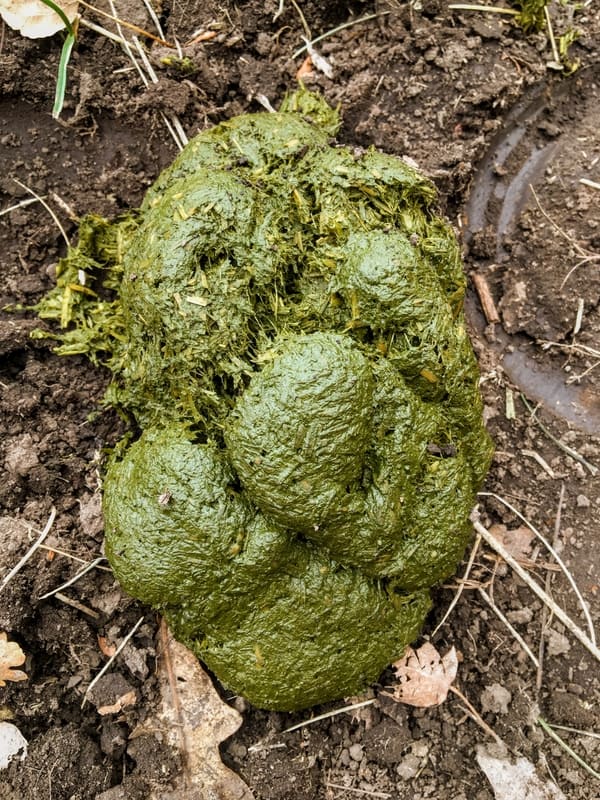
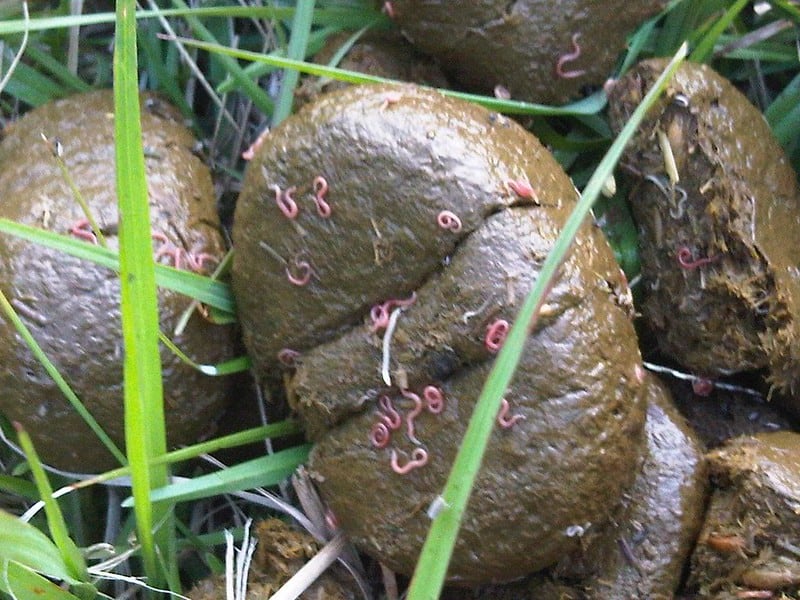

Now that we have covered consistency, let’s move on to color!
Color
Sometimes you may come across a colorful pile that makes you take a second look. The good news is there are many benign reasons for certain colors of poop, though there are some concerning colors that could indicate health issues. Poop can vary in color depending on the horse’s diet. Fresh manure ranges from pale yellowish brown to blackish brown (on the outside). Brown is a typical color for stools. If they are consuming a diet high in protein, their stool may be a darker brown in color. If they are consuming large amounts of mature grass, the stool will appear paler in color. Let’s look at the rainbow of possibilities:
- Brown: Shades of brown, from lighter yellowish brown to dark brown, are generally accepted to be a healthy color for stools but will vary depending on diet and between individuals.
- Green: Green stools generally indicate an intake of large amounts of alfalfa.
- Gray: A horse with a diet supplemented by vegetable oil may produce grayish and oily stools. Check with a dietitian or veterinarian about possible diet changes.
- Reddish/Purplish Brown: A reddish tint to stools can be caused by beet pulp in the diet. (The fecal balls may also look sticky and filmy.)
- Red: If you notice red stools or flecks of red that aren’t obviously caused by beet pulp, it could indicate blood in the stool and you should call your veterinarian.
- Black: While not as common as in some other species, black stools could indicate gastrointestinal bleeding.
We have been avoiding one of the most obvious things about poop: the smell!
Odor
If you care for horses, you probably know (and may even enjoy!) the usual smell of horse poop. However, you may occasionally come across foul-smelling stools that indicate something isn’t quite right. If the stools have a rotten smell coming from them, it could be due to a diet that is too high in protein or an issue absorbing nutrients. A sour smell could indicate too many carbs in their diet or a high parasite load. There are a number of reasons why stools may smell strange or downright unpleasant, including intestinal disease, the presence of parasites, and imbalanced diets. If you notice something off, be sure to talk about it with your veterinarian.
Congratulations! You are now a horse poop expert! Well, maybe not an expert, but hopefully this resource has introduced you to helpful information, allowing you to more confidently assess the well-being of your horse residents.
Know Your Horse Poop Infographic
Horse Poop by Amber D Barnes
Know Your Horse Poop: Colors Infographic
Horse Poop Colors by Amber D Barnes
SOURCES:
Manure Has Grubs Or Worms In It | Horse Side Vet Guide
5 Things To Look For In Your Horse’s Manure | Horse Health Products (Non-Compassionate Source)
Enteroliths in Horses | Kentucky Equine Research (Non-Compassionate Source)
Health Messages In Manure | Horse Care Tips from A to Z (An Equus Reference Guide) (Non-Compassionate Source)
What Does Your Horse’s Stool Say? | The Horse (Non-Compassionate Source)
Non-Compassionate Source?
If a source includes the (Non-Compassionate Source) tag, it means that we do not endorse that particular source’s views about animals, even if some of their insights are valuable from a care perspective. See a more detailed explanation here.








